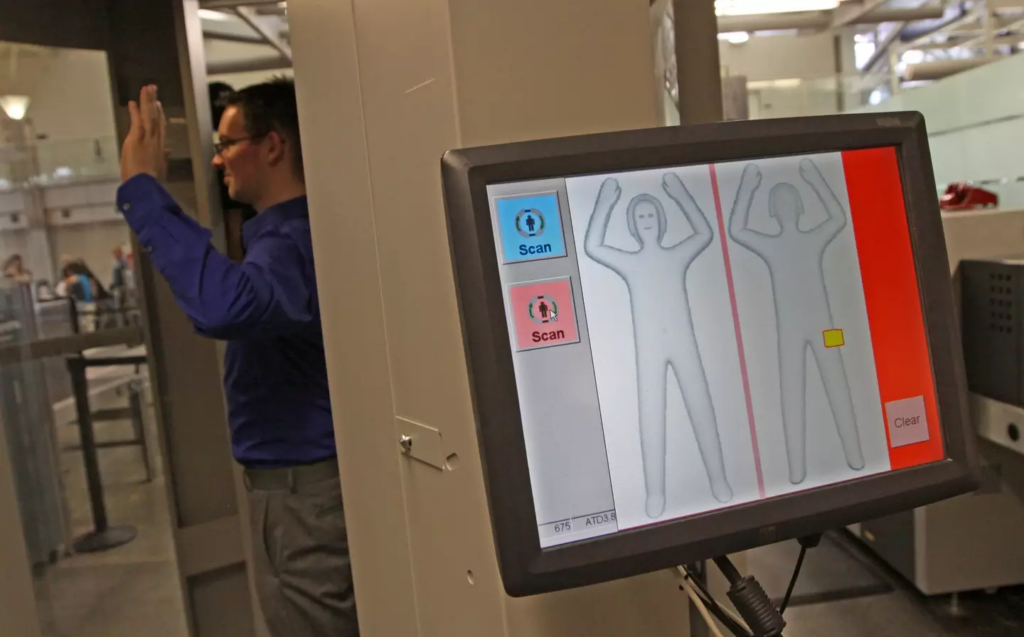Airports worldwide have undergone significant security upgrades in recent years, but few changes have been as surprising as the overhaul of full-body scanners in U.S. airports. The move was driven by privacy concerns and a surprising level of detail these machines provided, leaving many travelers shocked at what security personnel could see.
The X-Ray That Exposed Too Much

The initial push for full-body scanners came after a 2009 incident where a passenger attempted to detonate explosives hidden in their underwear. To prevent similar airport threats, the Transportation Security Administration (TSA) adopted full-body scanners developed by OSI Systems’ Rapiscan division. These machines provided an infrared image of passengers, but the detail was unexpectedly explicit, revealing more than anyone had anticipated.
Privacy Concerns Take Center Stage

The invasive nature of the images quickly sparked public outcry. Passengers were uncomfortable knowing that airport security agents could essentially see them fully unclothed. The controversy gained traction, prompting TSA to demand changes from Rapiscan, requesting software that could obscure sensitive details.
A Race Against the Clock

Rapiscan was given until June 2013 to address the issue with new software. However, the company admitted it couldn’t meet the deadline, forcing the TSA to terminate its contract. “TSA has strict requirements… Due to its inability to deploy non-imaging Automated Target Recognition (ATR) software… TSA has terminated part of its contract with Rapiscan,” the agency stated.
A New Generation of Scanners

By mid-2013, the TSA began replacing Rapiscan scanners with new models from L-3 Communications. Unlike their predecessors, new airport security only displayed a generic outline of passengers, addressing privacy concerns while maintaining security standards. This upgrade meant faster lines for travelers and enhanced privacy.
The Passenger Experience

For many, airport security can be a nerve-wracking experience. The thought of unknowingly carrying a prohibited item or being singled out adds to the stress. Before the upgrade, this anxiety was compounded by the invasive nature of the scanners, leaving passengers feeling vulnerable even before their vacations began.
Balancing Privacy and Security

While the new scanners have been praised for their less invasive imaging, some security experts argue that the old scanners provided a more thorough assessment. However, the TSA maintains that the current technology balances safety with traveler privacy, offering a solution acceptable to all parties.
Transparency in Tech

The airport seccurity debacle highlights the importance of transparency and adaptability in technology deployment. Rapid technological advancements can introduce unforeseen challenges, as seen in this case. The TSA’s willingness to listen to public concerns and pivot accordingly is a testament to its commitment to improving the passenger experience while ensuring safety.
Global Implications

The TSA’s scanner upgrade has set a precedent for other countries. Many international airports have followed suit, adopting similar technology to enhance both security and privacy. This shift reflects a growing trend in airport security toward less intrusive yet effective measures.
The Future of Airport Security

As technology continues to evolve, so will airport security protocols. Innovations like AI-driven screening and biometric verification are already on the horizon, promising to streamline the process even further. However, the lessons learned from the TSA’s experience with full-body scanners will remain a vital reminder of the need to consider privacy and public perception in security innovations.
With privacy and security now better balanced, travelers can focus on the more enjoyable aspects of their journeys—like that long-awaited Pina Colada waiting at their destination.

